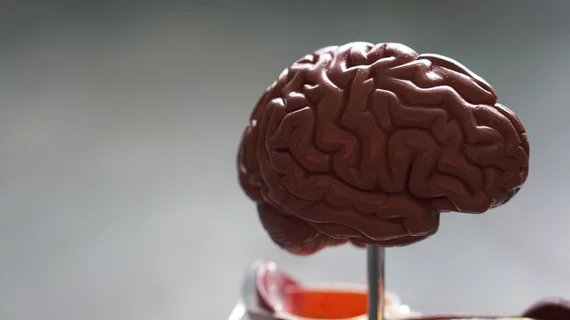Researchers have combined functional MRI with machine learning to guide deep brain stimulation (DBS) for patients with Parkinson’s disease.
The system hit 88% accuracy at optimizing stimulation settings, as confirmed by brain-response patterns on the neuroimaging as well as visibly observable symptom improvement in two separate sets of patients.
The project was conducted at the University of Toronto and is described in a study published May 24 in Nature Communications.
Neuroscientist Alexandre Boutet, PhD (candidate), neurosurgeon Andres Lozano, MD, and colleagues built their AI model on prospectively acquired fMRI data from 67 Parkinson’s patients.
They obtained the data during both optimal and suboptimal stimulation procedures.
The team came to the 88% accuracy finding by testing the system on 39 patients. In the process they demonstrated that fMRI brain responses to DBS in Parkinson’s patients “could represent an objective biomarker of clinical response. … Upon further validation with additional studies, these findings may open the door to functional imaging-assisted DBS programming.”
Offering a quick primer on DBS, Boutet and co-authors write:
Deep brain stimulation has become a standard of care therapy for movement disorders, particularly Parkinson’s disease, essential tremor and dystonia, and is being investigated in psychiatric and cognitive disorders including major depressive disorder and Alzheimer’s disease. DBS involves placing an electrode to deliver electrical stimulation within a dysfunctional neural circuit to suppress aberrant activity and/or drive an underactive network. Despite its recognized benefits, the therapeutic mechanism of action of DBS remains incompletely understood.
In the Toronto study, the patients included some who had previously benefited by deep brain stimulation and others for whom participation in the project represented a first time undergoing the therapy.
Boutet and co-authors suggest their fMRI/machine learning technique might serve as an objective clinical tool for programming DBS devices.
Poor programming, they point out, has been called out as a likely culprit in the failure of DBS to prove efficacious against clinical depression.
“Our results show that fMRI can rapidly define the optimal DBS in Parkinson’s patients,” they write. “Obtaining DBS-induced fMRI brain signatures associated with optimal clinical benefits will not only allow us to obtain a better understanding of the mechanism of action of DBS but could also facilitate individualized medicine for our patients and may represent a step toward the possibility of autonomous, closed-loop DBS programming.”
The study is available in full for free.

